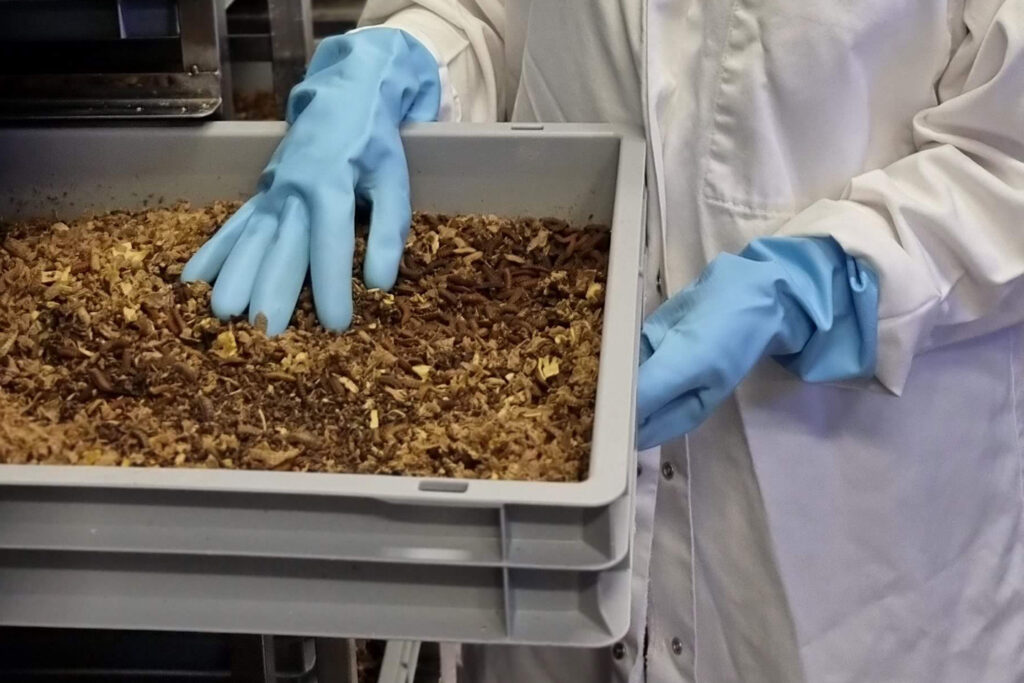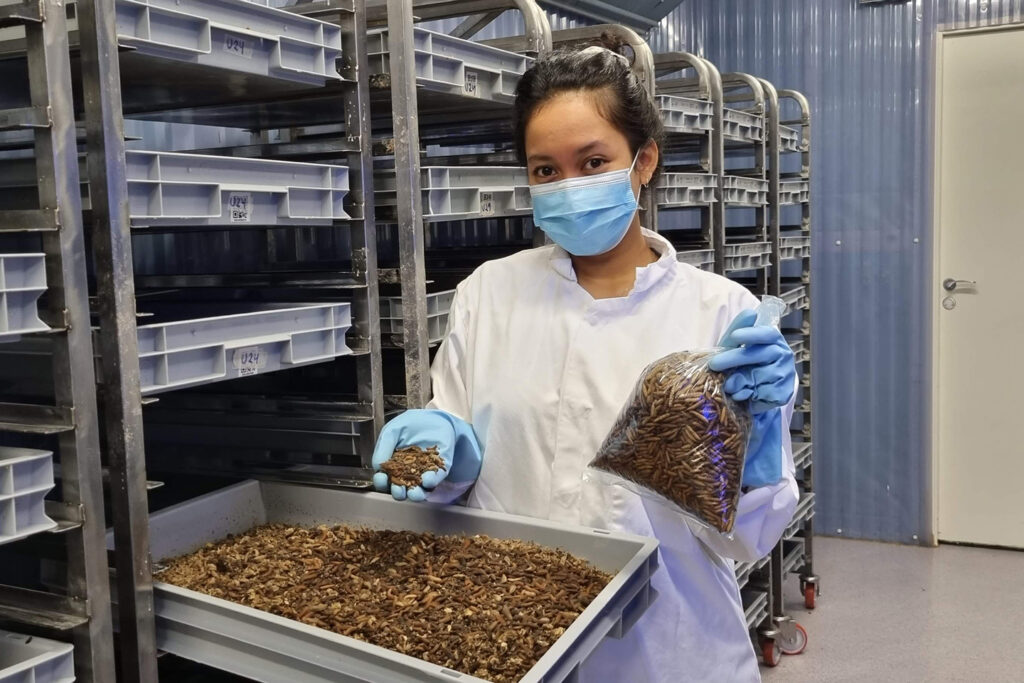Transforming Waste into Food: Insects as the New Superheroes in Future Animal Feed
2023.09.25

The larvae consume practically everything, says Graham Aid, Research and Development Coordinator at Ragn-Sells. Photo: Ragn-Sells
At the Ragn-Sells facility in Orsa, American black soldier fly are bred and fed with vegetable waste from the food industry. This insect pilot project is part of the Future Feed for Poultry, Fish, and Pork project, an initiative that also explores mycoprotein and blue mussels as raw materials for animal feed.
Graham Aid serves as the Research and Development Coordinator at Ragn-Sells. In his work, he aims to reduce the carbon footprint of animal feed by replacing wild-caught fish and imported soy in conventional feed with sustainably produced insect protein. According to Graham Aid, the American black soldier fly is a highly efficient waste manager with several superpowers.
We receive large quantities of vegetable waste here at Ragn-Sells. It’s wet and rich in carbohydrates. The fly larvae love it; they are voracious eaters that consume practically everything.
– Graham Aid, Ragn-Sells

Graham Aid is the Research and Development Coordinator at Ragn-Sells.
Animal Feed a Significant Emitter
According to the FAO, the global food system is responsible for approximately one-third of the world’s carbon emissions. Within this system, animal and feed production is the single largest source of greenhouse gas emissions. Feed accounts for 50–85% of emissions from pig, poultry and, egg produced in Sweden, and fish produced in Norway. This makes animal feed one of the most significant challenges to address for a more sustainable food system.
To reduce resource waste and environmental impact from feed production, and to test resource-efficient ingredients that promote biodiversity, Axfoundation and the Swedish University of Agricultural Sciences (SLU) have brought together stakeholders from across the food chain through the “Future Feed for Poultry, Fish, and Pork” project.
Through this project, new feed formulations for laying hens, poultry, fish, and pigs will be developed. In the pilot phase, researchers at SLU, in collaboration with partners, will test and evaluate feed ingredients, including mycoprotein, blue mussels, and insects.

Ragn-Sells develops production methods for scaling up the use of the American black solider fly as waste manager.
From Research to Scaling Up
Among insects, the American black solider fly has proven to be an effective waste manager. SLU breeds it for research purposes and secures the genetic material, while Ragn-Sells develops production methods for scaling up.
The larvae contain up to 35% fat and 50% protein. Ragn-Sells separates the dry material from the fat using various types of presses and dryers. Ragn-Sells has the advantage of being able to supply the fly larvae with large, distinct mono-streams of vegetable waste from the food industry – waste that is not mixed. It is, in fact, prohibited to use mixed household waste to feed insects and ultimately animals.
Due to concerns about mad cow disease, there is a fear of mixed waste streams from households and restaurants. This ban slows down development, even though it is understandable that one wants to secure the raw materials for feed from every perspective.
– Graham Aid, Ragn-Sells.

Audinisa Fadhila is the Insect Demo Manager at Ragn-Sells.
Fly Larvae Can Clean Waste
Here, the American black soldier fly’s second superpower comes into play as a potential solution. The larvae have the ability to clean waste from diseases and bacteria, which Ragn-Sells is further investigating in a separate research project in collaboration with SLU and others.
If diseases can be stopped by insects, and we can add household waste to production, we have significant scaling-up opportunities. Today, hundreds of thousands of tons of waste and by-products from the food industry alone are produced in Sweden. We can add a million tons of mixed household waste from households and restaurants the day it becomes legally possible.
– Graham Aid, Ragn-Sells
A challenge with insect production at present is that it requires a lot of manual labor. It is not an easy task to automate all processes cost-effectively.
At the same time, Graham Aid believes that the project opens important doors for joint solutions in insect-based, ocean-based, and fungal-based feed production. Even though different partners work with different ingredients and involve varied processes, they all share the common goal of developing balanced, healthy feeds with ingredients that have a low carbon footprint and promote biodiversity.
Through this project, we can work hand in hand and together discover sustainable recipes for the animal feed of the future.
– Graham Aid, Ragn-Sells
Learn more about the project Feed of the Future for Poultry, Fish, and Pork.

























































